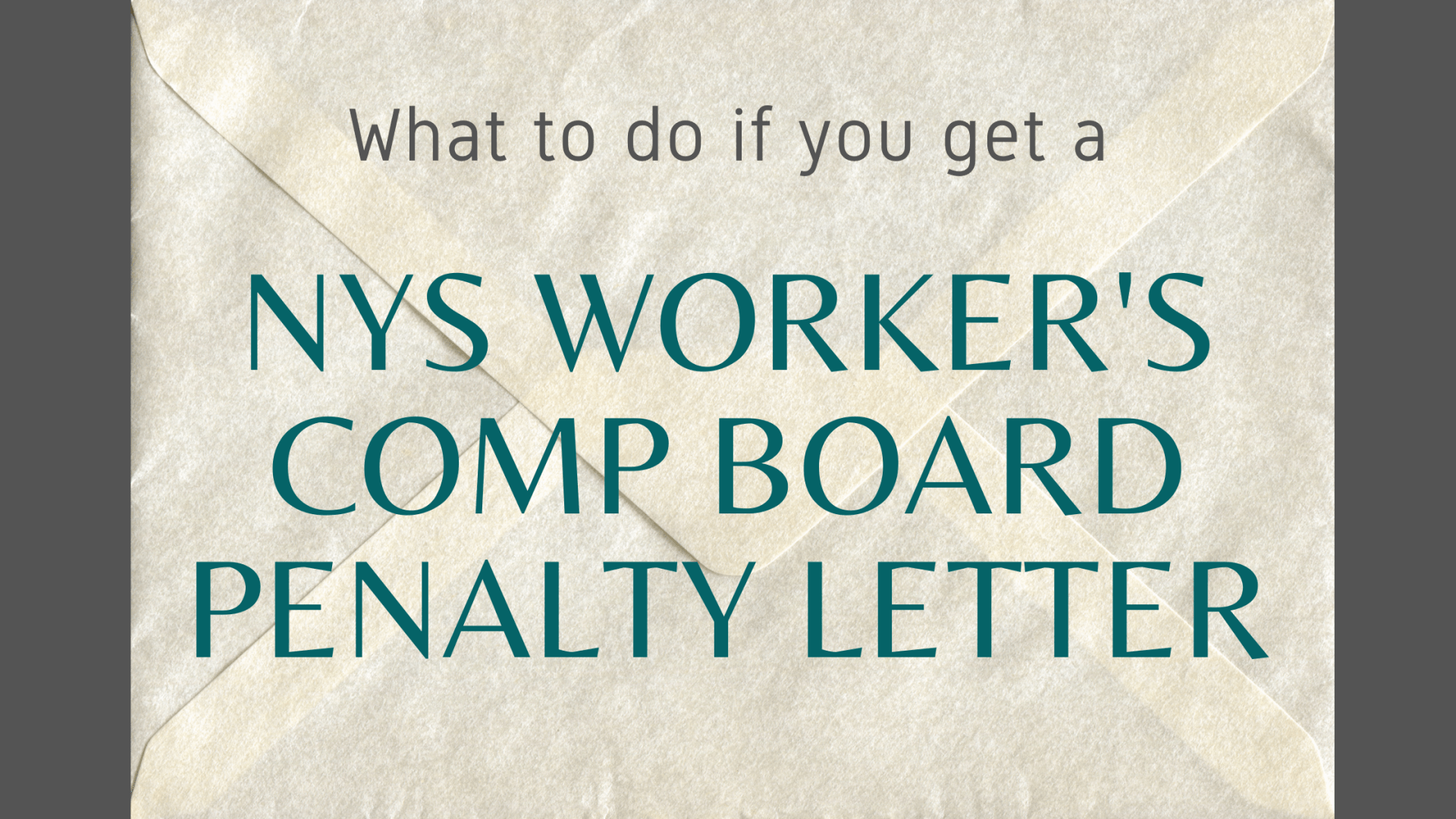
The NY Worker’s Comp Board is a state agency in charge of making sure that employees who are injured at work receive treatment and wage replacement benefits. They also ensure that unscrupulous employers don’t shift their liabilities to the Uninsured Employer’s Fund by auditing payroll and income tax filings for compliance with the statutory worker’s compensation laws. Their ultimate goal is to identify uninsured employers and get them in compliance and they take their duty seriously so beware if you end up in their cross hairs. It usually takes more than you think to make it go away.
How will you be notified?
The Worker’s Comp Board will notify an employer of their inquiry with a letter; it is imperative that you do not ignore this inquiry or there can be severe monetary consequences. You typically have 30 days to provide the evidence of coverage or evidence that no coverage was required. If the notice is not responded to the Worker’s Comp Board will automatically generate a penalty notice for the period of time in question. The entity is presumed uninsured, and the penalties are assessed at a rate of $2,000 for each 10-day period that insurance has been unverified which will continue to accumulate over the time of your dispute. You will receive a statement asking that you remit payment within 30 days to avoid collections and the account will be sent to a collections agency after that time period pursuant to NY State Tax Law.
It is the employer’s responsibility to prove that you either had the required insurance or were not required to provide it. Disputes of any items on the statement should be submitted through the appeal/review process indicated on the original invoice, penalty notice or board decision. Your very first step in addressing this penalty is to gather all of your documents. If you have insurance start with you C-105 Certificate of Employer’s liability insurance or the policy declarations page. It’s possible that coverage was replaced with a new carrier and hasn’t yet been updated in the tracking system. In New York State, the policy information is tracked by the Worker’s Comp Board and can be
viewed publicly here. New York is very astute in tracking compliance so you’ll be lucky if this is all it will take.
How to prepare.
The Worker’s Comp Board expects legally documented proof to reverse the penalty. A vague letter from an employer, or an accountant, that coverage was not required during the period in question will not suffice. Payroll and tax records are your best source of information when it comes to your business.
Gather your NYS-45 and IRS 941 payroll tax forms for all years in question. You may also want to gather your completed income tax returns, 1099-Misc forms and any other evidence you have of the true independence of your contractors. Communicate with the Worker’s Comp Board, respond to their letter with everything that they have asked for and make sure that you keep your eyes open for mailed correspondence from the board. They may ask for additional information or forms.
What to do if it’s too much to handle.
If the process seems too daunting, or you’re going in circles and getting nowhere, you might consider the advice of a lawyer. An experienced attorney may better understand what the Worker’s Comp Board is looking for and why. They may also ensure that the documents produced are the ones necessary to resolve the issue without creating new ones. Lastly, a lawyer may be able to help resolve the issue faster which can result in a much lower penalty and let you get back to business faster.
Penalty payment options.
If your business was in-fact not compliant with worker’s compensation coverage when required, act quickly to respond. Penalties accrue every ten days and will add up quickly over time. The penalties assessed can be paid on a payment plan. Set up a payment plan, and make sure that the payments are made consistently until the balance is paid in full. Failure to make good on this debt will affect your ability to obtain worker’s compensation coverage in future businesses, and they have a very long memory.
Services available to you that help.
Moving forward make sure that you work closely with your lawyer, accountant, payroll provider and insurance broker to ensure that you have an effective process when it comes to opening or closing a business, starting a new payroll, sub-contracting work or working with vendors.
Using an Administrative Service Organization, such as
SimcoHR, can drastically reduce your chances of being caught off-guard with compliance issues of all kinds including all statutory duties.
Sign up for our newsletter.




